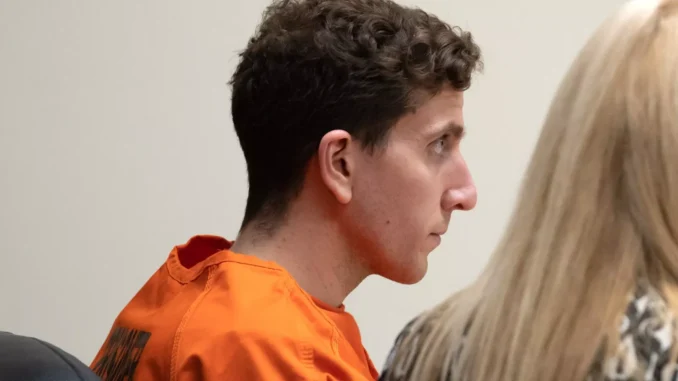
Lara Murray-Sterzel, Editor-In-Chief
On Sunday, Mar. 14, new evidence related to the Idaho Murders case was released. The new evidence contains the 911 audio call made by the surviving roommates after Kaylee Goncalves, Madison Mogen, Xana Kernodle, and Ethan Chapin were stabbed to death in an off-campus rental house. It’s been reported there hasn’t been a murder in Moscow since 2015.
Back in 2022, eight hours after the murders, the surviving roommates called the police outside the house in their driveway. When the dispatcher took the call, one of the roommates hysterically answered and explained something happened in their house before passing it to a neighbor. “One of the roommates who’s passed out and she was drunk last night and she’s not waking up. Oh, and they saw some man in their house last night,” said the neighbor to the dispatcher in the audio.
The dispatcher asked if one of them could find out if anyone else was passed out. In the audio you hear the surviving roommates reentering the house and making their way to one of the victims’ bedrooms. One of them calls out the victims’ names, but it’s unclear if they opened their bedroom door. “She’s passed out. What’s wrong? She’s not waking up,” said one of the roommates in the audio.
Four out of the two victims, Morgan and Kernodle, lived in the house and were a part of the same sorority. Mogen was Goncalves’ best friend and Chapin was Kernodle’s boyfriend. On the night of the murders, the victims were out separately with Mogen and Goncalves at a bar while Kernodle and Chapin at a fraternity party. Before heading home, Mogen and Goncalves were seen on footage grabbing food from a food truck. Kernodle and Chapin returned back to the house after the party ended. The four victims were all back at the house by 2:00 a.m. And just after noon, 911 was called.
The story of the Idaho Murders not only astounded Moscow but also the nation. Reports in the media detailing the crime scene, their stabbing wounds, the lack of forced entry, and no signs of sexual assault. The public wanted to know what happened and who did it. Once the police held conferences asking the public for any information, the cyber sleuths of the Idaho Murders case were born. Social media dug into the case and conducted their own investigation. Six weeks after the murders, an arrest was made.
The prime suspect in the case is 28-year-old Brian Kohberger, a former PhD student and teaching assistant majoring in criminology. One of the suspicions surrounding Kohberger is his off putting behavior. Two weeks before the murders, Kohberger met with faculty members who expressed their concerns about his conduct and behavior. A month later, he was relieved of his duty as a teaching assistant. Another suspicion is his college, Washington State University, is less than eight miles west of Moscow. Kohberger was arrested at his family home in Pennsylvania and is being charged with four counts of murder in the Idaho Murders case. Kohberger opt not to enter a plea allowing the judge to enter not guilty pleas on his behalf.
More evidence has since been released to the public including DNA, text messages, and phone calls which answered more questions about the case. The documents included text messages exchanges between the surviving roommates saying they couldn’t make contact with the victims between 4:22 a.m. and 4:24 a.m. The text messages also contain a conversation of one of them seeing a man clad in black and wearing a ski mask. The only feature made out to provide a description to police was the suspect’s bushy eyebrows.
Last Friday, Mar. 21, Kohberger’s Amazon search history was released. Kohberger went on Amazon and bought a KA-BAR knife, a KA-BAR knife sheath, and a knife sharpener eight months before the murders. A KA-BAR knife sheath with Kohberger’s DNA was found at the crime scene underneath one of the victims. And recent search history of Kohberger’s show he was looking to buy a replacement KA-BAR knife sheath. Prosecutors argue that the amount of evidence in cell phone records and DNA evidence point to Kohberger as the murderer. The judge sided with the state and is allowing the evidence to be admitted into trial. Kohberger’s jury trial is expected to begin in August and the two surviving roommates are expected to testify.
Leave a Reply